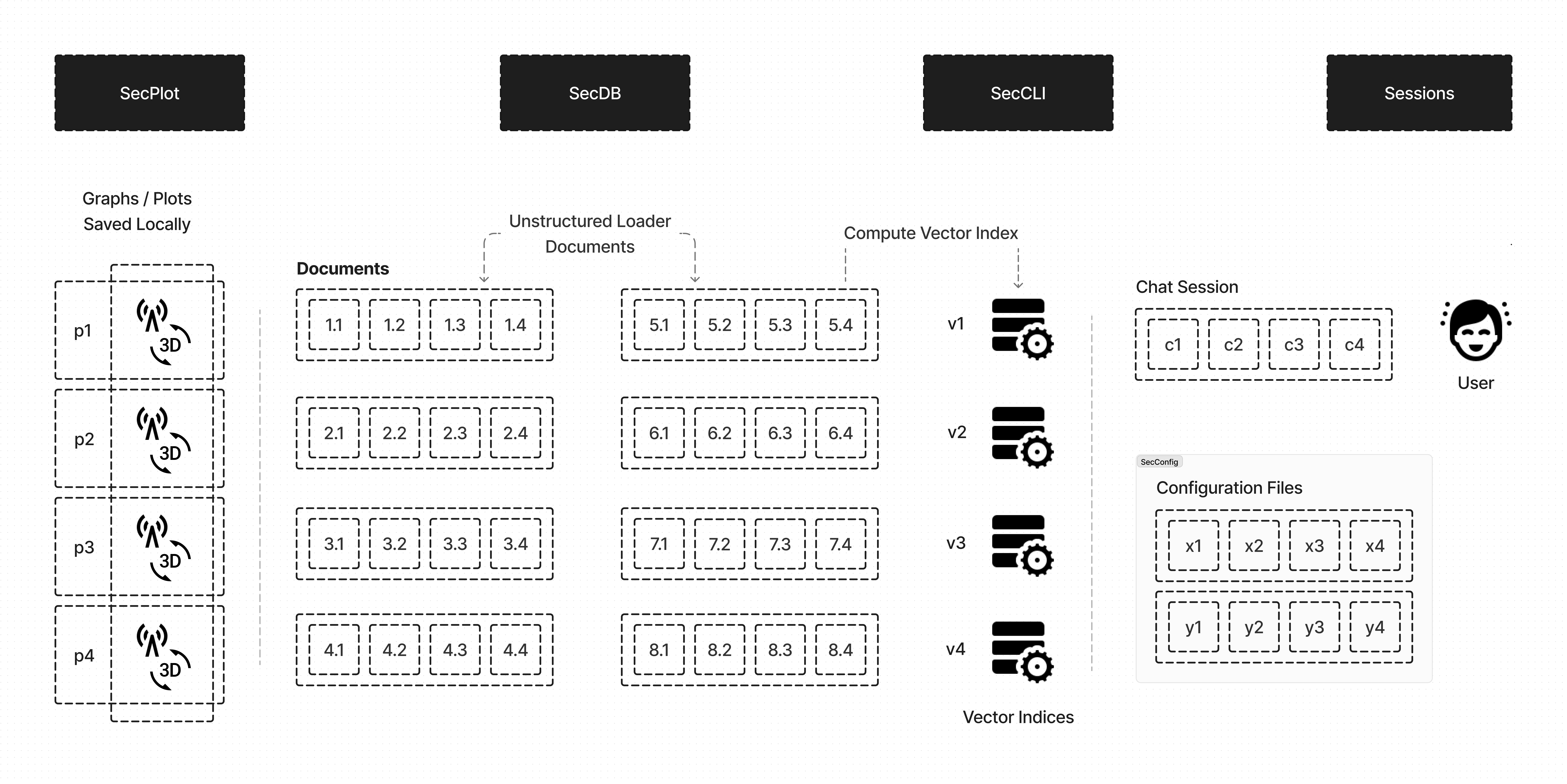- Get the exact Kaggle Notebook to run here: Sectral Kaggle Notebook
- Prefer Video Walkthroughs ? Check that out here: Sectral Kaggle Walkthrough
Retrieval augmented generation (RAG) is a natural language processing (NLP) technique that combines the strengths of both retrieval- and generative-based artificial intelligence (AI) models. Based on the task assigned, the easiest and best suited way to extract insightful data without huge amounts of data analysis, in a short period of time, while being resistant to events as, changes in data formats, layouts, etc, was to implement a RAG based on a relatively lightweight model (Mistral 7B in our case).
The following notebook contains the code blocks required for the functioning of the CLI program that initializes a RAG at the backend and provides a chat based interactive interface to the user. The user has the ability to load data corresponding to a particular stock and then ask questions related to it. The user also has the ability to create and visualize important financial metrics via plots and get insights from the model itself.
Even after my best efforts to create the system completely locally so that it could be easily deployed to a server without the requirement of a GPU, it turned out that even after quantization of the model (reduction in weight precisions), the model still required a GPU to function. Hence the decision was later taken to shift to an interactive kaggle notebook and provide a chat interface that is as intuitive and easy to use as possible, while making sure that the required results were being generated.
Dependency Installation: The following code block consists of the various libraries and frameworks required for the SectralCLI UI and Interface to function correctly.
Load a model without downloading it - We leverage the Mistral model provided by Kaggle. In my case, my current setup, does not include a GPU which made it almost impossible even to train a quantized version of the Mistral 7B model. Hence, the required settings for this Kaggle Notebook to function correctly are,
- Internet:
On(Toggle) - Accelerator:
GPU P100 - Model: mistral 7b-instruct-v0.1-hf/1 (by kaggle)
- Persistence: Files Only
The entire notebook is divided into the following major sections:
- SecConfig : Contains the configurations and other parameters required by the various components
- Internally uses the edgartools library to gather facts and information in the form of pandas dataframes
- SecPlot: Contains functions required to plot graphs and financial data related to a particular stock
- Internally uses the
matplotlibandpandaslibraries to create, plot and store the figures / graphs locally for reference
- Internally uses the
- SecDB: Contains functions required to create / load the vector database indexes depending on availability
- Internally uses
FAISS(Facebook AI Similarity Search) and stores the vector embeddings in theHuggingFaceEmbeddingsformat.
- Internally uses
- SecCLI: Responsible to bring all the components together. Initializes the model, loads data and manages the interactive session
- Internally uses all the previously listed components:
SecDB,SecPlot&SecConfigto create an interactive user session.
- Internally uses all the previously listed components:
Code Formatting and Structure: All the components strictly follow an Object Oriented Programming (OOP) approach wherein every member function and associated parameters are neatly encapsulated within classes. The files have also been formatted using black (python formatter) to follow the PEP 8 standard.
